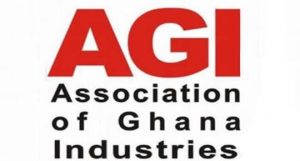The prices of products increased in all localities by an average of 4.2% due to the occurrence of the COVID-19 pandemic.
This is according to a recent survey dubbed, the Local Economies Tracker, conducted by the Ghana Statistical Service (GSS) on the impact coronavirus had on local economies.
The survey, conducted in May and June, proved that the prices of products in all localities increased by an average of 4.2% in as much as there was a variation of reasons and conditions in various districts in the country.
This increase in prices influenced the inflation rates of May and June, which stood at 11.3% and 11.2% respectively.
According to the survey, food and non-alcoholic beverages recorded the highest price increase, that is 4.8%, followed by transport with 4.1% and alcoholic beverages, tobacco and narcotics rising by 4.0%.
The Government Statistician, Prof Samuel Kobina Annim gave more insight as to how these figures came about.
“Within the domain of transport, we realized that while we saw a contraction in transport fares in the locked down districts, we saw an increase of 11.1% and 2.4% respectively for border districts and other districts. In the context of food and alcoholic beverages, we also saw significant variations in one context putting border and other districts together and locked down districts in another context. Specifically when we saw an upsurge in prices respectively by 6.6% and 5.0%, for border and other districts, we saw an increase of 2.5% indicating that between border and locked down districts, the percentage point difference for food and non-alcoholic beverages was 4.1%.”
“Another domain where we saw variations across these districts had to do with restaurants and accommodation services. We saw a contraction in the locked down districts and this would be partly related to the demand and supply issues as a result of the closure of most restaurants and accommodation services in the locked down districts relative to the border and other districts,” he explained.
The situation with consumer price inflation
Prior to the announcement of the first cases of coronavirus in Ghana on March 12, 2020, consumer price inflation in the country had remained fairly stable for months recording 7.8 percent from January to March.
The annual inflation however jumped to 10.6% in April from the 7.8% in March, driven by higher food and commodity prices due to a rush for items, in areas affected by the government ordered lockdowns.
After witnessing general rises in the following months, with July recording an inflation of 11.4%, the month of August recorded a much lower inflation rate of 10.5%.
About the Local Economies Tracker
To understand the effect of COVID-19 on the local economies, the Ghana Statistical Service, in collaboration with the United Nations Development Programme (UNDP), conducted the Local Economies Tracker in all the 260 districts in the 16 regions of Ghana.
The survey was carried out between May 28 and June 30, 2020, on a total of 2,770 communities or localities.
The districts in the various regions were segmented into three domains; that is the locked-down districts which include 40 districts, border districts made up of 47 districts, and other districts which do not fall into any of these categories.
Source: Citibusinessnews.com






